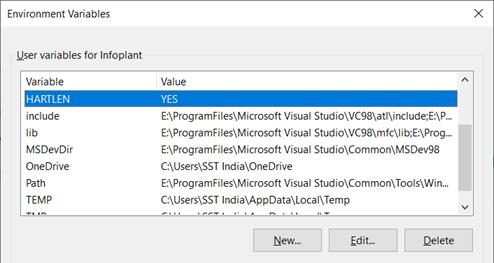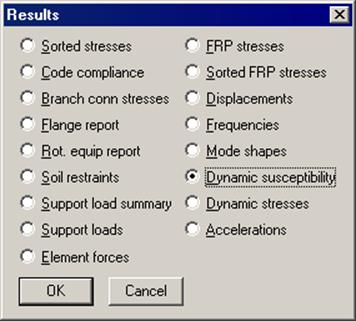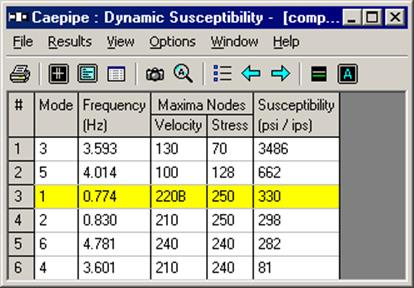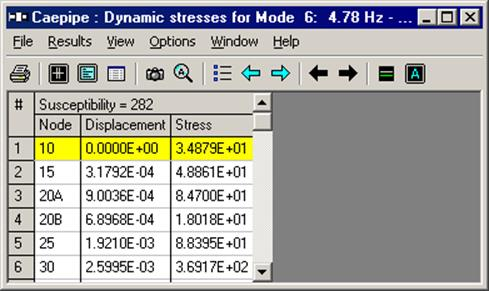Dynamic Susceptibility
Dynamic Susceptibility feature is a screening tool for potentially large alternating stresses. The dynamic stresses are the dynamic bending stresses associated with vibration in a natural mode. In other words, the modal analysis result has been generalized to include the alternating bending stresses associated with the vibration in a natural mode. The dynamic susceptibility for any mode is the ratio of the maximum alternating bending stress to the maximum vibration velocity. This “susceptibility ratio” provides an indicator of the susceptibility of the system to large dynamic stresses. Also, the associated animated mode shapes include color-spot-markers identifying the respective locations of maximum vibration velocity and maximum dynamic bending stress. The susceptibility ratio and the graphics feature provide incisive insights into the reasons for high susceptibility and how to make improvements.
The “Modal Analysis” output load case in CAEPIPE has been enhanced. In addition to the modal frequencies and mode shapes, you will see two new results items called “dynamic stresses” and “dynamic susceptibility.”
In case you do not see these two items in the results dialog, you need to activate this feature by defining an environment variable. See Annexure I for a detailed discussion.
First method:
An environment variable “HARTLEN” needs to be declared under My Computer > Properties > Environment > Variable (HARTLEN), and its Value set to (YES). Please check with your System Admin because different versions of Windows have slightly different methods of doing it.

Second method:
Open the MS-DOS Command Prompt. Type “SET HARTLEN=YES” (enter), change directory (using CD command) to where CAEPIPE program files are located, start CAEPIPE.EXE.
Upon (modal) analysis, the Results dialog will display the required results (dynamic stresses and dynamic susceptibility).


